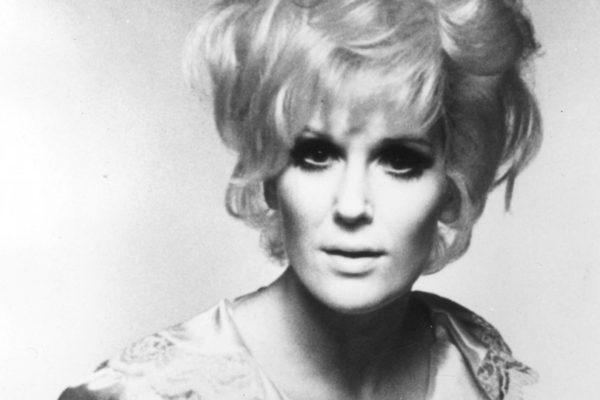Dusty Springfield was one of the most successful singers of the 1960s, scoring a number of hits on both the British and US pop charts. She found early fame in her native England as part of a folk-oriented trio called The Springfields, along with her brother Tom and Tim Feild, who was later replaced by Mike Hurst. The group landed in the US Billboard Top 20 during 1962 with their version of “Silver Threads and Golden Needles.” Despite their success, Dusty wanted to expand her musical horizons and explore a solo career, so she left the group in 1963. Her string of hits includes the often covered “I Only Want To Be With You” and “Wishin’ and Hopin’ as well as “I Just Don’t Know What To Do With Myself” and “You Don’t Have To Say You Love Me.” At one point, she was the top-selling female artist in the world. As a long-time fan and supporter of soul music, it was only natural that Dusty would at some point collaborate with some of the top creative talents in the genre.
In 1969, she decided to record in Memphis, Tennessee at the legendary American Sound Studio, a place where artists like Aretha Franklin and Wilson Pickett had also spent time. Under the stewardship of master producers Jerry Wexler, Arif Mardin, and Tom Dowd, work began on the album that would come to be known as Dusty in Memphis. She was backed by the renowned instrumentalists The Memphis Cats, and the well-regarded R&B vocal trio The Sweet Inspirations. Dusty was initially nervous during the sessions, as she was unsure about some of the song selections made by Wexler. A perfectionist in the studio, Dusty previously had more control behind the scenes, having often worked (often uncredited) on the production of her music. She knew this record would be compared to the work of artists such as The Queen of Soul herself, Aretha Franklin. Dusty also wasn’t used to the looser, relaxed vibe of the Memphis studios, as opposed to the more straightforward atmosphere she knew from recording in England. But what grew out of those Memphis sessions was a truly sublime work.
Related: “It Still Stacks Up: 1968 Made Stax Records”
The songs on Dusty in Memphis were penned by top tier talent, including the celebrated songwriting teams of Gerry Coffin & Carole King, Burt Bacharach & Hal David, Barry Mann & Cynthia Weil, and Muscle Shoals vets Eddie Hinton & Donnie Fritts. The disc also includes a pair of tunes by Randy Newman. The lush production accentuates Dusty’s deeply sensual vocals. On tracks like “Just A Little Lovin” and “Breakfast in Bed,” you can almost feel that voice wrap around you and encircle you in its warm embrace. Dusty is a truly talented interpreter of great songs; just listen to her definitive versions of Newman’s “Just One Smile” and Mann & Weil’s “So Much Love.” Of course, there’s also the iconic and deeply soulful “Son of a Preacher Man.” Rightly celebrated as the jewel of the album, it’s one of Dusty’s most enduringly popular numbers. Several decades after its original rise to the Top Ten, director Quentin Tarantino used the song in Pulp Fiction to underscore the scene where John Travolta’s Vincent first meets Uma Thurman’s Mia. Not bad for a song initially offered to Aretha, who released her own version only after Dusty’s became a hit.
While Dusty did clash at times with Wexler and the rest of his team, her instincts were often right on target. For the album’s cover of the popular “The Windmills of Your Mind”, she suggested slowing down the tempo of the song, altering it from the original by Noel Harrison. Dusty’s version of the tune ended up cracking the top 40. Despite the difficult production work on the record, and the need to lay down some final vocal overdubs in New York, what emerged from those sessions is now regarded as one of Dusty’s greatest achievements, and a landmark of its genre. It’s a terrific album, one I remember discovering back in my early record store days, and being wowed by when I took it home and spun it on my turntable. I wore out my copy and fell in love with her incredible voice, which inspired me to seek out more of Dusty’s records, including her follow-up album, A Brand New Me, produced by the legendary team of Gamble & Huff. You can draw a straight line from Dusty In Memphis to the work of artists like Adele, Duffy and Joss Stone. It’s an album that stands the test of time as a true classic.
-Dusty Springfield
Photo: Getty Images



0 comments on ““Dusty In Memphis”: When English Cool Met American Soul”